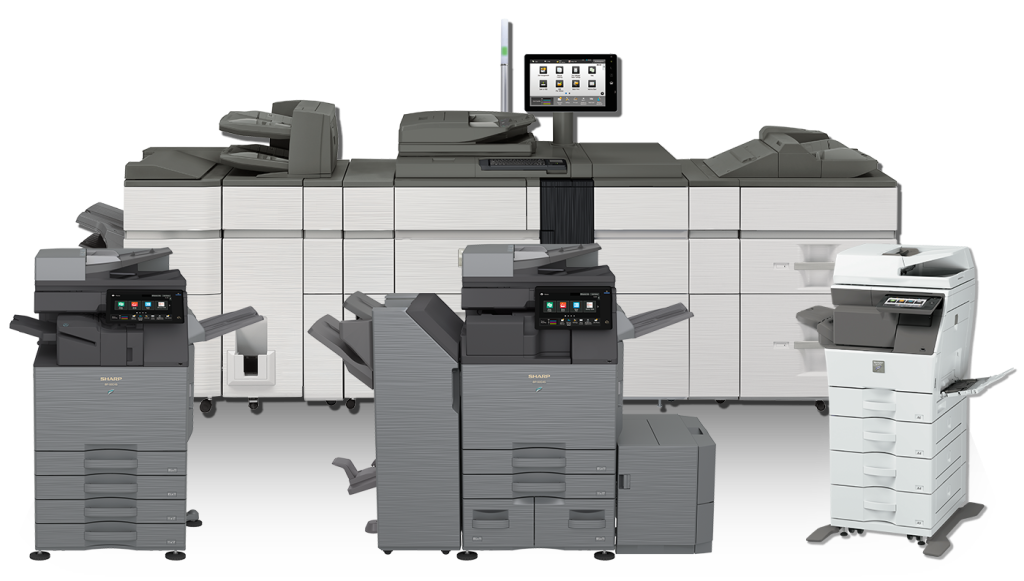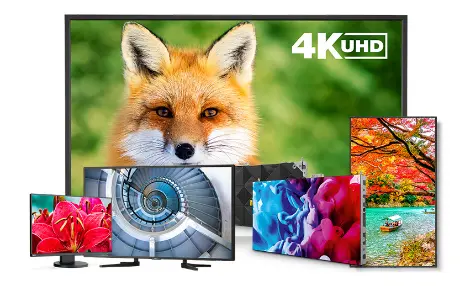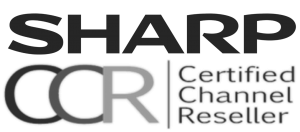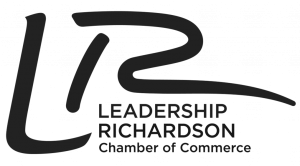
Copier Lingo 101 with A1 Image
Look, we know how it is. You’ve been sent out on a scouting mission to find the best possible printing or copying solution for your office. Everyone knows you’re diligent, resourceful, a hard worker…the problem is that you simply don’t know the lingo. There are tons of acronyms, terms and terminology associated with copiers and MFPs that can leave you with your head spinning. That’s where we come in. We’re here to give you a leg up in the world of copier and printer terms. Research is great, but if you’ve been in the business as long as we have, you know that it doesn’t take long to get lost in translation, if you know what I mean. Use the following as a quick guide to get you up and running in the world of copiers and MFP’s.
Analogue copiers
Back in the day, all copiers were “analogue”. This simply means that they reflected light onto a photosensitive surface (the drum) which was then charged, attracting toner in the appropriate places, and then that toner was transferred to the paper and fused with heated rollers. The main disadvantage to an analogue copier today is that it is a “one scan, one print” technology. If you want to scan a 10 page document and make 10 copies, the copier will have to scan each page 10 times. That’s 100 scans. A digital copier will scan the entire document once (10 scans) and then store it in memory while it prints out the 10 copies. That’s a lot less wear and tear on the hardware. To put it bluntly, an analogue copier might be akin to a typewriter, while a digital copier is more like a word processor (this mostly referring to its ability to store information for eventual and multiple reproduction). While most new machines are digital, analogue copiers and MFPs can typically be picked up for less money than their digital counterparts.
Automatic Document Feeder (ADF)
This is that unit that typically sits atop a multifunction printer which holds a stack of papers and automatically sends documents, one-at-a-time, into the unit for copying. Also see Document feeder below.
Base Amount
Most service contracts have a minimum number of copies per month (often referred to as the “base” amount). A higher base amount will, in most cases, lower the CPC (cost per copy/click).
Bins
These are trays which catch and hold documents as they exit the printer or copier. Larger MFPs, particularly ones with finishers, will have fancier, moving bins that can actively collect and organize documents as they exit the device.
Booklet
An advanced function of duplexing copiers whereby pages are input as one-sided or two-sided and output so that they are arranged correctly in order when the finished pages are folded in half.
Bridge unit/bridge kit
A bridge kit is an optional unit that connects a copier to a finisher or other add-on device. It often looks like a robust tray with rollers and a low voltage power connector to hook it into the power supply of the MFP.
Buyout
This is the amount of money owed at the end of a lease agreement in order to buy the copier, scanner or MFP. Some leases have a zero dollar buyout at the end, while others offer a lower monthly rate, but leave a reasonable fair market value on the unit at the end of the lease period.
Bypass tray
This is a manual paper feed tray that lets you send special material directly into the scanner or printer, such as cards or heavy index stock. A bypass tray usually holds a smaller volume of paper compared to an integrated paper tray and bypasses the 180 degree turn of the automatic document feeder.
Cabinet/stand
This is a stand, often with storage, for a non-desktop printer or copier. The cabinet can often be upgraded to additional paper drawers or cassettes, thus growing the capacity of the MFP or printer.
Card reader (SD/MMC/etc)
This is either an integrated or add-on memory card reader for scanning to, or uploading images from.
Catch tray
This is a generic term for the tray which collects the copies or prints coming out of the machine.
CMYK
Cyan, Magenta, Yellow, blacK—these are the four toner colors required for a color copier or printer (including both laser and inkjet technologies).
Collate/Collation
This is the process of taking a multipage document and printing it in such a way as to retain its order, even when making multiple copies. Without collation, copying a 4-page document would yield copies in the order: 1,1,1,1,2,2,2,2,3,3,3,3,4,4,4,4 instead of 1,2,3,4,1,2,3,4,1,2,3,4,1,2,3,4. Using a finisher with automatic sorting bins further enhances collation by allowing the separation of the documents (and even stapling and binding with additional options).
Color copiers
Color copiers are always digital machines and come with multiple toner cartridges in order to produce colors as needed. These are most often Cyan, Magenta, Yellow and Black—allowing them to reproduce full color prints as well as black and white copies and prints. Most modern color copiers can be used as color networked laser printers as well.
Consumables
Toner, paper, drums, staples, fuser oil, developer and any other wearable parts or supplies that need to be periodically replaced or refreshed fall into this category.
Coverage
Coverage is an industry term that is used to describe the average amount of toner or ink on a page. It is said that a typical black & white business document contains around 12% coverage.
Copies per minute
Every MFP or copier is rated for speed and this represents the average number of copies it can produce every 60 seconds to the output tray. This number will flex depending upon whether the original is coming from a supply tray (slower), or the glass (faster), or whether it involves duplexing.
Cost per copy or cost per click (CPC)
This is an amount of money in a service agreement that usually includes maintenance, toner, and drum costs—represented as a cost per click or cost per copy. Most service agreements have a minimum number of copies per month (often referred to as the “base” amount). A higher base amount will, in most cases, lower the CPC.
Digital copier
Digital copiers, as mentioned above, scan all documents into memory and can reproduce multiple copies form a single scanned source. This makes them much faster at accomplishing more complex tasks and also gives them the advantage of having fewer parts. Fewer parts means less downtime and maintenance. Image reduction and enlargement as well as the adjustment of contrast and image brightness are also more easily facilitated with digital machines.
Document feeder (ADF, RADF, DADF)
This is a mechanism that feeds a stack of paper into a copier or printer automatically. It can (optionally) be attached to a duplexer for greater speed and efficiency. Related terms include: automatic document feeder, reversing automatic document feeder, or duplexing automatic document feeder. An RADF mechanically reverses the page and scans each side while a DADF uses two scanners to read both sides of a page simultaneously (making it nearly, if not more than, twice as fast as RADF devices).
Drum
The drum is the mechanism that resides in the middle of the action. The drum, typically made of aluminum, includes several layers which are light and charge-sensitive (this can be made with selenium or other material) and which apply the toner to the paper. A drum is a consumable device, but one which often lasts through several toner cycles.
Duplexer (duplexing device)
This is a mechanical paper feeding and scanning device that either scans a single side of a page at a time (recirculating, or single-sided duplexer) or both sides of the page at a time (single-pass scanning). A single-pass duplexer uses two cameras or scanners to literally allow scanning of both sides of a two-sided document at once. A duplexer can be both the function of a scanning device or a printer. It is common for MFPs to have both duplex scanning and duplex printing. The more common single-sided duplexer will be slower than a single-pass duplexer simply because it must physically flip the page over in order to either print-to or scan from the second side.
Duplex digital document scanner or electronic recirculating document handler (ERDH)
This is a rather complex, but generic term that simply refers to any copier or MFP that has the capability to take a two-sided multi-page original document, scan it in once, and generate multiple collated copies. (see Duplexer)
Duty cycle (or Maximum monthly volume)
This is a number denoting the volume of printing and/or copying that a machine is specified to be able to handle during the course of a month. It is a good comparison number for gauging the volume of work any particular copier or printer is designed to handle and is a (general) reflection of the construction of its internal components.
Electronic sorting
When you aren’t using a moving bin system, an electronic sorter can produce collated documents that are separated by varying the output orientation of every other document—first horizontally, then vertically. You’ll see this on some models as al alternative option to procuring a full-out finishing system.
First-copy/First-print
This term (often designated as “Time to first copy”) is used to reveal how quickly the MFP or copier can output a document when you walk up to the machine and use it “cold” by placing a document on either the feeder or the glass and press the ‘Copy’ button.
Full-bleed
This term is often interchanged with the maximum printable area of a copier or printer. Full bleed typically refers to a printed document that can has a black and white or color print right up to the very edges of the paper. If you desire a full bleed document, but your printer cannot print to the very edge of the page, then you need to use a larger sheet of paper and trim the page as needed.
HDD
Shortened name for hard disk drive where documents are stored when scanned in order to facilitate recall of previously scanned/copied files as well as when sorting or collating larger documents.
IPM
Images per minute. This refers to any particular scan or print. A single 2-sided page will represent two images.
Ledger (or tabloid) paper
This is the english designation for 11×17 (inch) page size.
Legal paper
This is the english designation for 8.5×14 (inch) page size.
Memory
This is the RAM or short-term storage capacity of the MFP or copier which often reflects how powerfully it can handle tasks like digital collating and multi-page document scanning. Any time a digital copier scans a document, it stores that information into memory—at least until the job is completed or another one is started.
Multifunction printer or multifunction device (MFP or MFD)
This is a device that typically handles copy/scan/print and often fax duties in a single device. MFPs have reduced the number of separate devices required in an office and have sped up workflow efficiency in many places where multiple tasks needed to be accomplished at the same time.
Platen (flatbed/glass)
This is an old term that comes from the era of the printing press. With modern machines, it now refers to the glass surface on which paper is placed before making a copy or scan. More commonly, this is simply referred to as the “flatbed” or the “glass”.
PPM
Pages per minute. The designation of the number of documents that can be scanned or printed by a particular machine.
Resolution
This can refer to either print or scan resolution and is typically a term to relate the number of optical pixels which will be recognized from (scan) or deposited to (print) a document. Some devices may give interpolated resolution numbers, but generally the optical resolution is truly the metric that delineates the resolution differences between devices.
Reversing (recirculating) automatic document feeder
See “Document feeder” above.
Secure erase (secure HDD erase)
With the advent of digital copiers and scanners, the use of hard drives necessitates a concern for better security. Secure erase (there are many proprietary terms for this feature) uses proven methods to write blank data on top of the hard drive of an MFP or copier in order to erase any documentation that may have been on it. This is a great feature for those wanting to be in compliance with requirements for legal and health records and is typically a feature you’d use (at the very least) when selling a device or returning it at the end of a lease.
Service contract (service agreement/maintenance agreement)
A service contract is a monthly, quarterly, annual, or lease-length agreement that allows the operator to pay a small amount of money per page printed in order to cover all maintenance on a leased or owned MFP, scanner or copier which covers all maintenance, toner, and drum costs. This is typically billed as a cost per click or cost per copy. Most service contracts have a minimum number of copies per month (often referred to as the “base” amount). A higher base amount will, in most cases, lower the CPC.
Sorter
This is a series of mechanical trays located at the output side of a copier or MFP which allows collation of documents. Many sorters also include additional functionality such as stapling.
Time to first copy/time to first print
See “First-copy/First-print” above.
Warm-up time
This is the amount of time a device takes before it is ready to either print or copy a document after being turned on. This is different from the time to first copy designation (see above).
Yield
This is the number of pages a particular consumable will support. There are yields for toner and developer as well as other consumables such as drums












